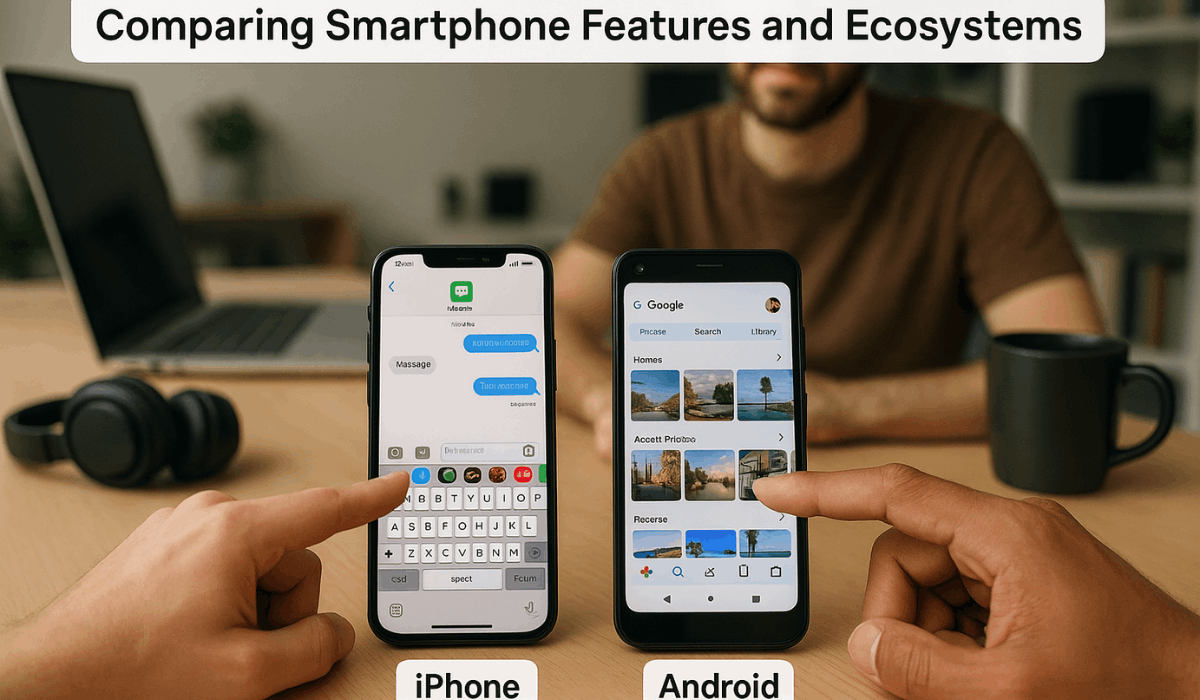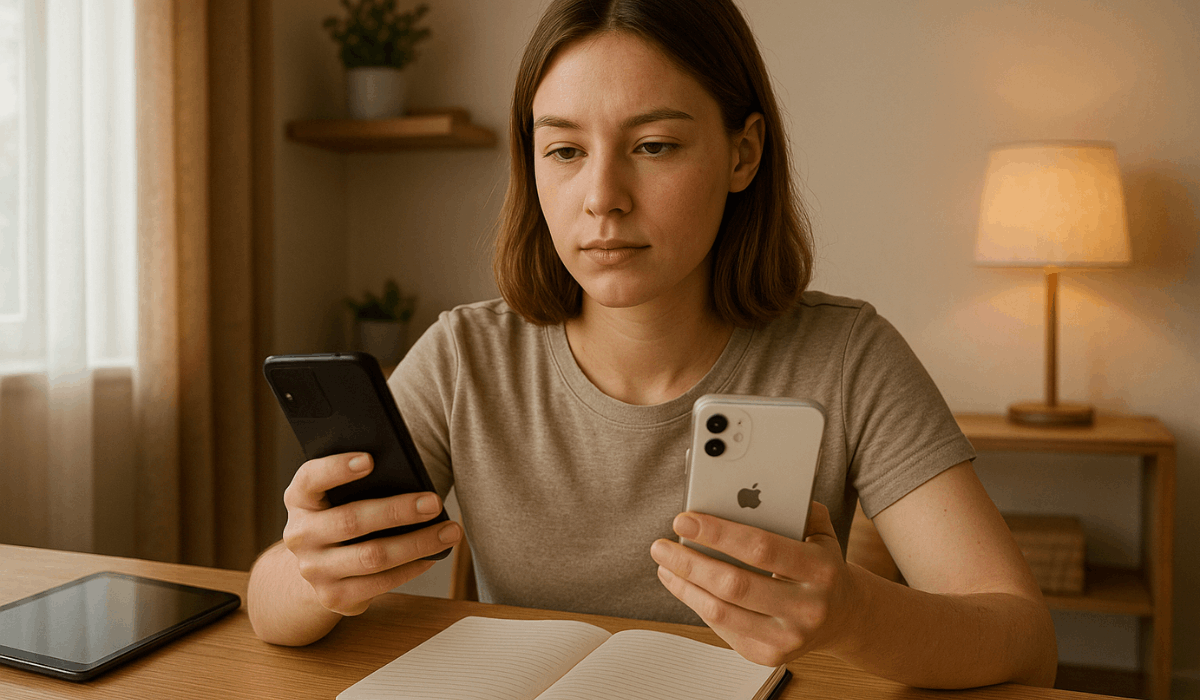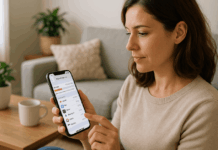The debate between iPhone and Android has been ongoing for over a decade.
Despite major improvements on both sides, many users still switch between the two.
This article examines the underlying reasons behind these moves and what motivates individuals to switch platforms.
Ecosystem Lock-In and Cross-Platform Needs
Users often switch between systems based on how connected or flexible each one is. Some want full integration; others need freedom across devices.
- Apple's Ecosystem – iCloud, iMessage, and AirDrop works smoothly across Apple devices, encouraging users to stay.
- Android’s Flexibility – Google apps like Drive and Gmail work on Android, iPhone, and computers, offering more freedom.
- Switching for Compatibility – Android users switch to iPhone to match other Apple gear. iPhone users leave for more brand options.
- Content and Feature Access – Some switch to avoid lock-in or to gain cross-device access to features they need.

Software Updates and Longevity
Update policies play a significant role in why users switch platforms. People want reliable updates, security, and long-term support.
- iPhone’s Update Advantage – Apple provides iOS updates to all supported models simultaneously, often for 5 years or more.
- Android’s Fragmentation – Many Android phones get updates late or inconsistently, depending on the brand.
- Pixel and Samsung Exceptions – Google Pixel and newer Samsung phones now offer better and faster update support.
- Switching for Support – Android users often switch to iPhone for timely updates. Some iPhone users try Android again when brands improve support.
Hardware Variety and Design
Design and hardware features strongly influence switching decisions. Users often choose devices based on their appearance and the features they offer.
- Apple’s Consistent Design – iPhones offer a premium build with few model changes and strong performance across all variants.
- Android’s Wide Selection – Android brands offer foldables, gaming phones, large batteries, and more design choices.
- Unique Features on Android – Users switch for extras like headphone jacks, stylus support, or expandable storage.
- Switching Based on Appeal – Some leave iPhone to try bold Android designs. Others return to Apple for its sleek, reliable look and feel.
App Optimization and Privacy
How apps run and how your data is handled affect many users’ decisions. Performance and privacy can lead people to switch platforms.
- iPhone’s App Quality – iOS apps often run smoother and are better optimized for performance and stability.
- Android’s App Flexibility – Android allows sideloading and more customization, but this can lead to security risks.
- Privacy Focus on iOS – Apple emphasizes privacy controls like app tracking transparency and on-device processing.
- Switching Reasons – Android users switch to iPhone for enhanced privacy and smoother app experiences. Others switch to Android for more control and freedom.
Pricing and Perceived Value
Cost is a significant factor when choosing a smartphone. Users switch platforms based on what they can afford and what they think they’re getting for the price.
- iPhone’s High Price, High Resale – iPhones cost more upfront but hold their value longer and have solid long-term support.
- Android’s Price Range – Android phones are available in all price levels, ranging from entry-level to flagship, offering a wider range of budget options.
- Midrange Android Appeal – Many users pick Android for good performance at a lower cost.
- Switching for Value – Some leave iPhones for cheaper Android models. Others switch to an iPhone when looking for better long-term use.

Peer Pressure and Messaging
Messaging apps and social pressure often influence the decision to switch. Users want to fit in or stay connected without compatibility issues.
- iMessage and FaceTime – Apple-only features like iMessage and FaceTime push users to stay in the iPhone ecosystem.
- Green Bubble Problem – In iPhone groups, Android messages appear as green bubbles, which can feel left out or limited.
- Android’s Open Messaging – Android users rely more on WhatsApp, Telegram, or Google Messages, which offer broader support.
- Switching for Social Reasons – Many switch to iPhone to avoid group chat issues. Others switch to Android, where iMessage doesn’t matter.
Customization and Control
Some users value the freedom to customize their phone's appearance and functionality. This desire often leads to switching between platforms.
- Android’s Flexibility – You can customize launchers, icons, widgets, and even install custom ROMs.
- iPhone’s Simplicity – iOS offers limited customization but maintains consistency and user-friendliness.
- Power Users Prefer Android – Tech-savvy users often opt for Android for greater control over their devices.
- Switching for Ease or Freedom – Some leave their iPhone for more freedom. Others switch back for a cleaner, simpler experience.
Battery and Charging Preferences
Charging speed and battery life matter in daily use. These features often influence why users move between platforms.
- Android’s Fast Charging – Many Android phones support fast or super-fast charging with USB-C and bigger batteries.
- iPhone’s Slower Charging – iPhones charge more slowly and use Lightning until switching to USB-C in recent models.
- Battery Health Focus – Apple prioritizes battery longevity with features like optimized charging.
- Switching for Power Needs – Users Opt for Android for Faster Charging. Others switch to iPhone for longer battery health over time.
Customer Service and Support
Support quality can affect long-term satisfaction. Many users switch based on how easily they can get help or repairs.
- Apple’s In-Store Support – The Genius Bar offers in-person help, quick diagnostics, and same-day repairs.
- Brand Variations on Android – Support varies by manufacturer; some offer strong assistance, while others don’t.
- Repair and Warranty Differences – Apple offers standard repair options, while Android policies vary by brand and region.
- Switching Based on Service – Users Switch to iPhone for Reliable Support. Others switch to Android when Apple's service feels too rigid or expensive.
Innovation and Experimentation
Some users switch platforms to try new tech first. Innovation speed and unique features play a big role in these decisions.
- Android Leads in New Tech – Foldables, under-display cameras, and fast refresh rates often appear on Android first.
- Apple’s Polished Approach – Apple adopts new features later but usually delivers a more stable version.
- Trying the Latest Features – Tech enthusiasts switch to Android to experience cutting-edge hardware early.
- Returning for Stability – Some move back to iPhone for a smoother, more refined user experience.
To Wrap Up
Switching between iPhone and Android often comes down to personal preferences, such as ecosystem, updates, design, and pricing.
Both platforms offer substantial benefits, which is why users continue to move between them.
Take the time to review your priorities and choose the device that best fits your daily habits.








